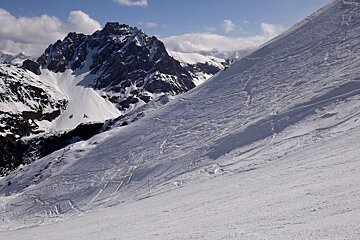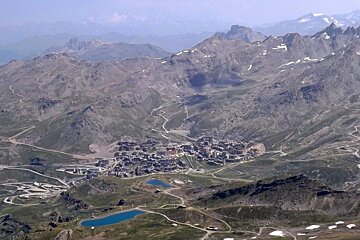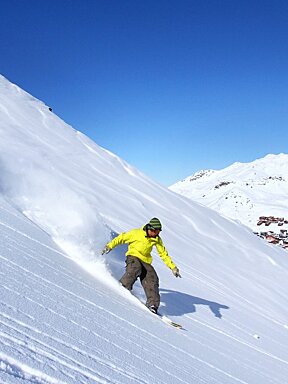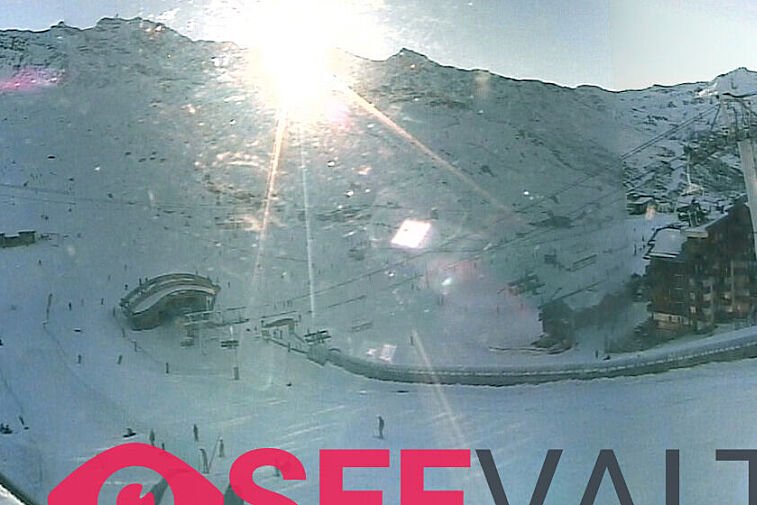
© Gemma Hunt

© Michel Serraillier

© Gemma Hunt
History of Val Thorens
Discover the Val Thorens of yesterday
Over the centuries Val Thorens and the surrounding areas have been farmed and mined in much the same fashion as most of the Alps.
These days Val Thorens is a pleasant attractive resort with a lively night life, good restaurants and plenty to do both on and off the mountain. Heritage tours of the area can be organised through the tourist office and the back streets of St Martin are well worth a wander to get a feel of the original ‘old town’. In the summer a hike along some of the high mountain walking trails will lead you past old refuges and farm buildings from years gone by. The resort is now linked to the rest of the Three Valleys and the neighbouring domains of Courchevel and Méribel are easily accessible via the fast and efficient lift system.
Early history
There is evidence of human settlements from as early as 2000BC and remnants have been found from Iron Age communities. Over the years we can also see that the valleys became quite densely populated and were sufficient to support a growing population of pastoral farmers.
Development through the ages
However, with the 20th century came two great wars and the population was depleted. Of those that came back from battlefields across Europe, many of them left Val Thorens to find work in the bigger cities of Moûtiers and Savoy, that were benefiting from the activity generated by the hydroelectric works and the steel industry.
Recent history
At the start of the 1960’s Val Thorens was still mainly agricultural, but its potential as a resort had been noted; plans were put in place to develop it along with Val Chavière into a large winter resort. However, the plans for the development of Val Chavière encroached upon the land of the Vanoise National Park, which vetoed the project as part of their policy against urbanisation of protected natural areas.
In 1967 the lower resort of Les Menuires was built; it was constructed rapidly in the now outmoded architectural style of the 1960’s. It has long been thought of as the ‘ugly’ part of the region, but recent investments are trying to rectify that and give it a more up-market image. Les Menuires was the first location to be turned into a ski resort by virtue of the easy access by road; in 1969 that road was extended up to Val Thorens enabling the development plans to be put into action.
The 1970’s were when Val Thorens really started to take shape as a ski resort; in 1971 the first three draglifts were built and the following year Jean Berenger, a former coach of the French women’s ski team, set up the first ski school, the Club des Sports and the tourist office. His importance in the history of the area is marked by a piste named in his honour.
Between 1972 and 1973 the Péclet glacier and north slopes were equipped with several lifts, opening up glacier skiing and a wider ski domain.
Throughout the 70’s and 80’s more draglifts and chairlifts were installed, making the ski area ever bigger and better linked. The Cime de Caron cable car was completed in 1982, then the largest cable car in the world.
By the 1980’s it became apparent that the first buildings constructed in the early 70’s were not going to visually stand the test of time. A project of renovation transformed the resort; outmoded buildings were replaced by traditional style chalets and ugly concrete facades were clad in local wood and stone. From this point on all new developments must conform to stricter aesthetic guidelines more in keeping with the traditional style of the area.
The development of St Martin de Belleville into a ski resort did not happen until the early 1980’s and so, happily, the lessons that had been learnt in Val Thorens were applied. Traditional architecture was maintained and new buildings were designed in keeping with the style of the area. This remains one of the more picturesque parts of the region.
Throughout the 1990’s the lift company SETAM ploughed much investment into improving the comfort, waiting time and links of the lift system – making Val Thorens one of the most modern and efficient resorts in Europe.




![[itemref] living-room](https://cdm0lfbn.cloudimg.io/v7/_images_base_/image_uploader/arkiane/original/inter_00210069.jpg?ua=1579868382&p=carousel)

























